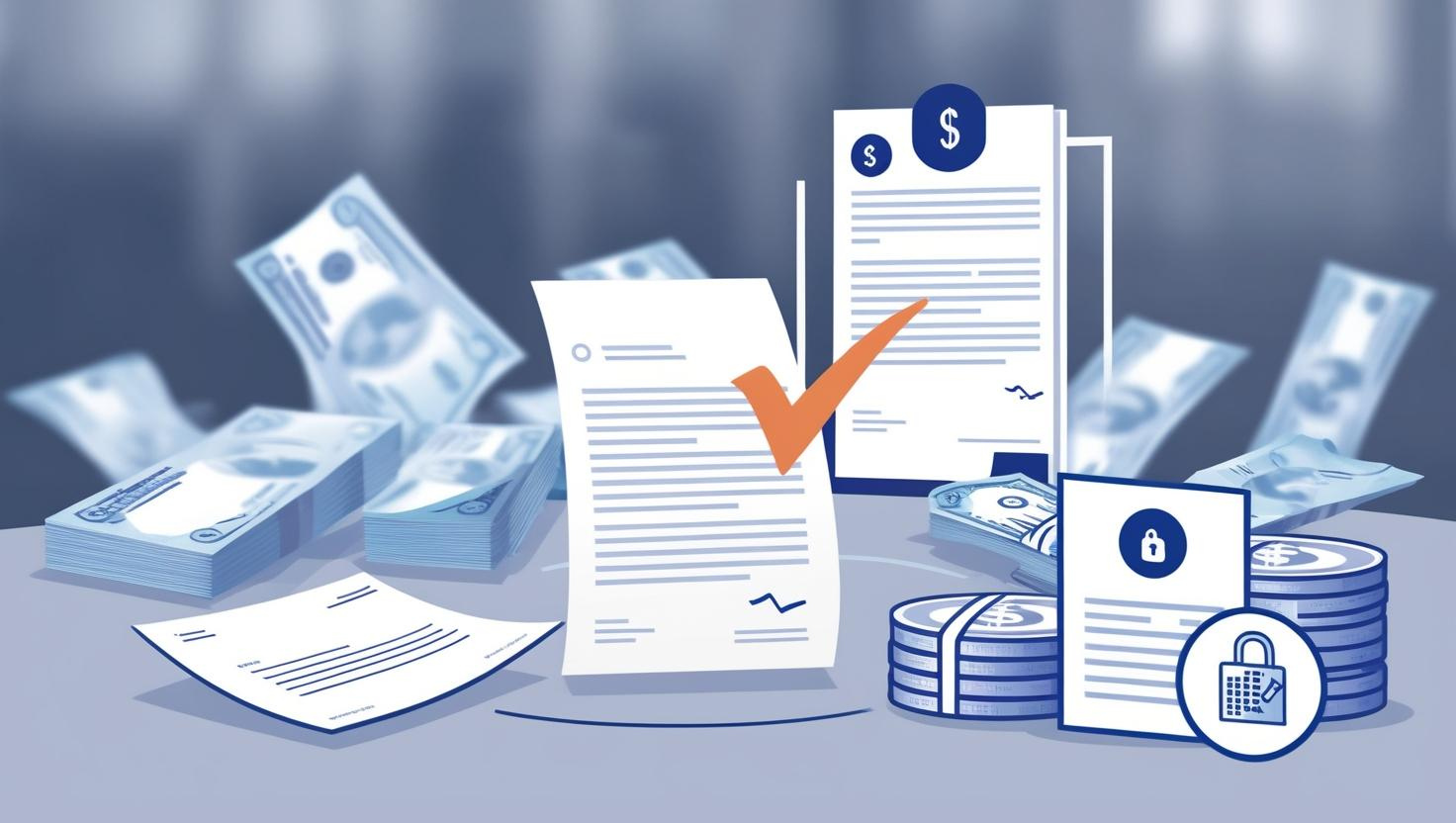Anúncios
Obtaining a Loan in Denmark Requires Understanding Criteria and Amounts that Favor Approval
Some loan amounts have higher acceptance rates by Danish banks.
Analyze loan amounts with the highest approval rates in the Danish market, considering local banking practices, interest rates, approval timelines, and risk factors. We will cover popular banks, the applicant’s credit profile, and the key elements to ensure success in the application.
Loan Amounts
Approval Rate of Amounts
In Denmark, granting loans involves a detailed analysis of factors such as income, credit history, and the client’s relationship with the bank. Danish society, characterized by organization and transparency in personal finances, tends to value moderation in the level of indebtedness. Therefore, certain loan ranges are more easily approved because they present lower risks to banks. In general, loans ranging from moderate amounts (e.g., 50,000 to 200,000 Danish kroner) tend to have a higher approval rate, as they fit the payment capacity of many families or individuals with stable employment.
At the same time, each bank maintains internal credit policies, adjusting rates and conditions to the country’s reality. It is essential that applicants understand these nuances, as those seeking excessively high amounts without offering guarantees will have a lower chance of approval. On the other hand, very small amounts may be provided through credit cards or overdraft facilities. In recent years, the digitization of processes has made document submission easier and reduced response times, but institutions remain focused on avoiding defaults.
We will explore how these amounts work and why certain limits enjoy higher acceptance by Denmark’s main banks. We will also discuss banks like Danske Bank, Nordea, Jyske Bank, Sydbank, and Nykredit, known for catering to personal credit demands in the country. Additionally, we will examine how interest rates relate to risk and how bureaucracy adapts to the requirements of financial supervisory authorities in Denmark.
Loan Amounts with the Highest Approval Rates
In practical terms, the approval rate of a loan is related to the likelihood of the bank saying “yes” to the credit request. If the loan amount is moderate and aligns with the income, the chances of approval increase. In summary:
Anúncios
• High amounts (e.g., above 300,000 or 500,000 Danish kroner) may require guarantees, especially when the applicant’s monthly income does not justify such high payments.
• Low amounts usually do not require a formal loan process; often, the bank itself offers credit limits through a credit card or overdraft, though with potentially higher interest rates.
• Intermediate ranges (e.g., 50,000 to 200,000 DKK) tend to have the highest approval rates, as they offer a significant amount for personal use (e.g., minor home renovations, second-hand vehicle purchase, debt consolidation) without exceeding the safety limits set by the banks.
Although each person has distinct needs and income profiles, these mid-range amounts are often approved more quickly and with simplified procedures, including the possibility of digital signature through the MitID system. This allows the customer to resolve their matters without going through extensive bureaucracy.
To understand better, it’s important to keep in mind that the cost of living in Denmark is high, but salaries are also proportionally aligned. A loan of 50,000 to 100,000 DKK can be absorbed by the finances of many Danish workers without seriously threatening their stability, provided that the installments are set at reasonable levels. Next, we will explore each relevant bank, covering their credit ranges and how the requested amounts influence approval.
Analysis of Loan Amounts
Amounts from 10,000 to 50,000 DKK
Loans of this size are considered small-scale. In many cases, they can be resolved with credit cards or revolving lines of credit without much formalization.
Approval Rate: Tends to be high, but interest rates may be slightly higher, as many customers choose these amounts to cover emergencies or purchase smaller goods.
Risk: Since it is not a large amount, the verification process is shorter, but if the customer has a negative history, it can still be denied.
Amounts from 50,000 to 200,000 DKK
This is the range that typically exhibits the highest approval rate. It involves loans for home renovations, used car purchases, further education, or debt consolidation.
Approval Rate: Very high, as many salaried individuals can afford the installments within 3 to 5 years without excessively compromising their monthly budget.
Risk: Moderate for the bank, as the sum is not large enough to require complex guarantees but is significant for the customer. Banks tend to approve if the income is stable and there are no pending issues in the RKI (Danish credit registry).
Amounts from 200,000 to 500,000 DKK
Larger amounts, intended for bigger projects (house expansions, high-cost vehicles).
Approval Rate: Lower than the previous range, as the bank ensures the customer’s income is sufficiently high. Sometimes a guarantor or collateral is required, depending on the financial situation.
Risk: Considerable, as defaults on larger loans can lead to losses for the bank, which is why there is a greater requirement for proof of financial capacity.
Amounts Above 500,000 DKK
These are generally treated as special loans or mortgages (if for property), almost always requiring real guarantees or a deep evaluation of the customer’s assets.
Approval Rate: Only for high-income profiles or with strong guarantees. At this level, bureaucracy is inevitable, and approval may take longer.
Risk: High. Therefore, it is rarely classified as an “unsecured personal loan”; it usually requires collateral.
Interest Rates and Risks
The Danish banking market is highly regulated, but interest rates vary depending on internal policies, the client’s profile, credit score, and the loan’s perceived risk. In general, the higher the loan amount requested, the greater the risk perceived by the bank—unless it is accompanied by solid collateral. However, in moderate ranges (50,000 to 200,000 DKK), the rates tend not to be very high, as the likelihood of default is lower when the amount fits within the applicant’s income.
Another aspect is the possibility of fixed or variable interest rates. Personal loans in Denmark typically have fixed rates so that the borrower knows how much they will pay over the entire term. However, some banks may link part of the rate to market indices or a periodic evaluation. In any case, the exact rate is only defined after analyzing the borrower’s income, their history in the RKI (Danish credit registry), existing debts, and the amount requested.
In terms of risk, for the client, it means being careful not to exceed their budget limit to avoid unmanageable installments. For the bank, it involves verifying through internal scoring whether the borrower will meet the monthly payments on time. This balance regulates the conditions offered: the more reliable the profile, the lower the interest rate and the higher the chance of approval.
Interest Rates and Risks
| Loan Range | Interest Rates (Example) | Risk Level |
|---|---|---|
| 10,000 to 50,000 DKK | ~5-10% p.a. | Low to Moderate, depending on the score |
| 50,000 to 200,000 DKK | ~4-8% p.a. | Moderate, with higher overall approval |
| 200,000 to 500,000 DKK | ~6-10% p.a. | Moderate to High, requiring thorough verification |
| Above 500,000 DKK | ~7-12% p.a. (or mortgage) | High, usually requires collateral or guarantors |
Table Notes:
• The interest rate column (example) indicates an estimate of annual interest. Each bank adjusts this individually.
• The risk level refers to both the bank’s and the client’s perspective. Larger amounts without collateral imply higher risk.
• In Denmark, interest rates can be higher or lower depending on the country’s economic situation and the client’s profile (age, employment stability, etc.).

Approval Process
Submission of the Request
The initial step is filling out an online or in-person form at the bank branch. The applicant provides personal data (CPR number, marital status, monthly income), loan purpose, and the requested amount. In many cases, the bank suggests on its website which loan amount range has the best approval chances, based on algorithms or the customer’s history.
Evaluation
Next, the bank performs initial checks:
• RKI Check: If there are any outstanding issues, the chance of rejection increases.
• MitID Verification: To verify the applicant’s identity.
Document Analysis
The applicant submits pay slips, bank statements, and tax declarations (if self-employed). The goal is to confirm income stability. The bank analyst cross-references this with any existing debts to estimate the monthly installment that fits the applicant’s budget.
Internal Score
The bank assigns an internal score to the profile, considering factors like age, occupation, length of residence in Denmark, the history of relationship with the institution, and usage of other products (cards, mortgages). The higher the score, the better the chances of receiving lower interest rates and approval for higher amounts.
Decision and Contract
After the checks, the decision is made: the loan may be fully approved, partially approved (lower amount), or denied. If approved, the bank issues the contract, specifying interest rates, terms, and charges. The customer signs digitally using MitID. Within 24-72 hours, the amount is deposited into the account, depending on administrative processes.
How Approval Timelines Work
In Danish banks, approval can vary from hours to days. For low or medium amounts — especially in the range of 50,000 to 200,000 kroner, which has the highest approval rate — if the documentation is in order and there are no pending issues in the RKI, the response may come within 24 to 48 hours. For larger amounts, the process requires more caution: the bank may request guarantees, additional checks, or a guarantor, extending the response time to up to a week or more.
It is common for the client to receive notifications via email or the bank’s app during this wait, such as “Under review,” “Documents received,” or “Final stages of approval.” If the applicant needs more time to gather additional documentation, the deadline may be extended. However, thanks to digitization, bureaucracy has notably decreased, and many banks prioritize speed to attract customers in a competitive market.
There is also the possibility of pre-approval if the user is salaried and already uses the same bank for receiving their monthly salary, as the institution can see the financial flow and set a limit based on this. If this pre-approved limit fits the customer’s needs, the contract can be finalized immediately. When it is necessary to exceed the pre-approved limit, the bank performs an extra check, but the process remains quick if the applicant’s history is positive.
Applicant’s Credit Profile
The credit profile of a loan applicant in Denmark combines various elements that outline the likelihood of the customer paying installments on time. In this sense, banks look at factors such as age, job stability or self-employment, education level (when relevant), monthly income, spending history, and any other concurrent financing. A worker who has been receiving a salary in Danish kroner for several years, without any protests in the RKI (Danish credit registry), with balanced expenses, tends to have a high score and, consequently, a higher approval rate.
Legal residency and the CPR number (personal identification) also play a role, as they ensure the ability to locate the borrower. If the applicant is new to the country, they must present proof of stability, such as an indefinite employment contract or a banking history showing consistent salaries. Additionally, banks check for outstanding debts or high credit card limits, as this could increase the risk of excessive indebtedness. In short, having a “clean profile” and an income that matches the requested amount is usually the best formula for obtaining quick approval and competitive interest rates.
Data Analysis
A fundamental part of the loan approval process in Denmark is the use of advanced data analysis. Financial institutions collect information provided by the customer, combining it with internal records (previous relationship, punctuality in payments) and external databases (RKI, pension system records, and verification with tax authorities). Through algorithms and scoring, they estimate the likelihood of the applicant remaining compliant throughout the loan term. This approach, combined with the rigorous supervision of the Danish banking sector, enhances the security and predictability of credit operations.
Since many processes are done online, data analysis allows the bank to act quickly, as document checks are automated. So, if everything is consistent—income, history, and amounts within considered safe ranges—the approval comes in a few hours. On the other hand, if algorithms detect abnormalities (e.g., sudden income changes, unpaid debts, discrepancies between statements and declarations), the application is forwarded to a human analyst for further investigation. This balance between technology and personal decision-making has made the Danish personal credit market highly efficient while maintaining prudence.
Summary of Benefits
• Moderate loan amounts: Higher chance of approval, as the risk is lower and it fits within the income of many Danes.
• Transparency: Danish banks follow regulations that require clear descriptions of fees and charges.
• Digital speed: Applications and signatures can be completed online, with responses in hours for lower amounts.
• Internal scoring: A good history of using banking services reduces bureaucracy.
• Good interest rates: Loans with amounts aligned to the applicant’s income generally receive lower rates.
• Flexible terms: The customer selects the repayment period, balancing the installment and the total interest cost.
• Possibility of guarantees: For those needing higher amounts, offering collateral reduces the risk and interest rate.
• Financial organization: Denmark has a high standard of financial stability, which reflects in favorable conditions for personal loans.
Most Frequently Asked Updated Questions
1. Can I get loan approval even if I have previous debts, but they are up to date?
Yes. Having debts does not eliminate the possibility of new credit, as long as they are being paid on time and the additional installment does not exceed the safe limit for your income.
2. Do I need to prove the purpose of the loan for medium amounts, such as 150,000 DKK?
In many cases, a specific purpose is not required for a personal loan. However, if you specify the purpose (e.g., home renovation), it can strengthen the bank’s trust, as they see the use of the money as responsible.
3. What are the risks of applying for very high amounts without collateral?
The higher the amount without collateral, the lower the chance of approval, and the higher the interest rate may be, as the bank assumes a higher risk. If the income is not compatible, the loan will likely be denied or the amount reduced.
4. What happens if I repay installments early or want to pay off everything before the end of the term?
In general, early repayment is possible, saving future interest. Some contracts may charge a small administrative fee for early termination, but it is usually worth it to reduce the total cost.
5. Do public servants or pensioners receive special benefits from Danish banks?
Yes. Some banks offer favorable conditions for those with income stability, which applies to public employees, retirees, etc. Interest rates may be lower, and approval may happen faster.
The search for loan amounts with higher approval rates in the Danish context reflects the importance of balancing the amount requested with the applicant’s repayment capacity. As we saw, medium credit ranges—between 50,000 and 200,000 Danish kroner, for example—tend to enjoy high acceptance from the main banks in the country, as they fit the income profile of many citizens and do not pose disproportionate risks to financial institutions. Combined with a positive credit history and organized documentation (pay slips, bank statements, proof of residence), these amounts are relatively quickly approved with competitive interest rates.
In the Danish banking ecosystem, transparency and digitalization play a crucial role. Both the ability to apply for loans online, using MitID to sign contracts, and the immediate consultation of credit records in the RKI speed up the decision-making process and ensure security. The policies of each bank—Danske Bank, Nordea, Jyske Bank, Sydbank, Nykredit, and others—vary in details, but in general, all prioritize the customer’s economic stability. If the monthly installment does not compromise more than 25% to 35% of the budget and there is no negative debt history, the chances of receiving a “yes” from the bank are very high.
Furthermore, those aiming for very high amounts without providing collateral may face higher interest rates or rejection, as the bank fears that the income will not support such high installments. On the other hand, seeking very low amounts may not always require a formal loan, but instead solutions like credit cards or overdraft limits, which, in some cases, involve higher interest rates. Therefore, being informed about the ideal credit range, considering family income, and following Danish banking guidelines not only ensures access to funds but also the peace of mind of honoring each installment without complications.



